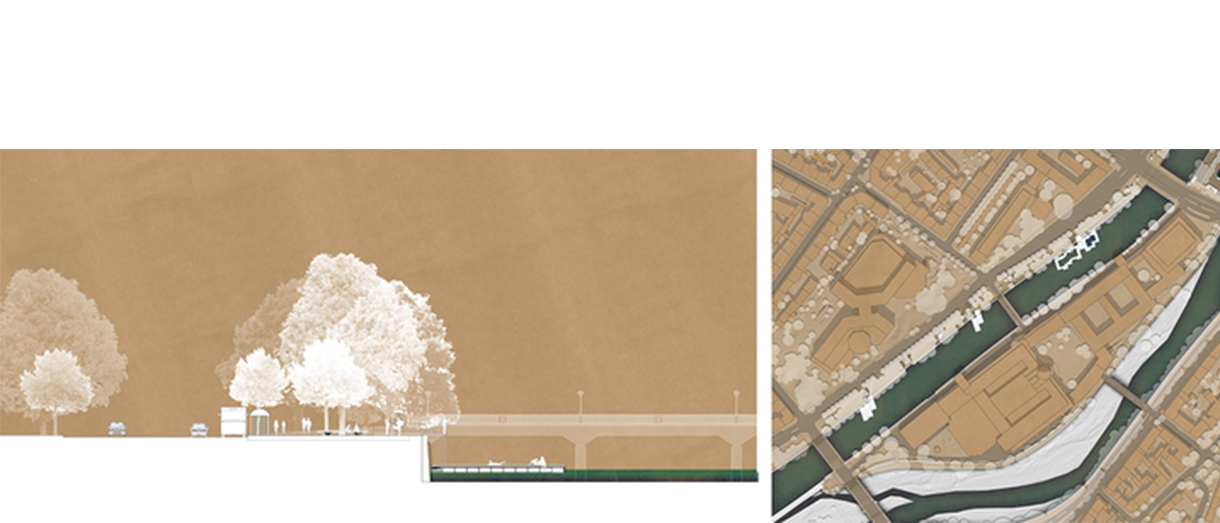River Pool Munich
Floßbad
Master's Thesis M.A. Landscape Architecture, Tobias Drexl
Topic
The continuing growth of the city of Munich is exerting enormous pressure of use on the existing open spaces, such as the English Garden or the Marienhof, in the city center. This need makes new development of public open spaces a premise.
The high building density in the center of Munich makes a new development almost impossible and a utilization of existing potentials becomes inevitable.
The first thing that comes to mind is Munich's largest and most important open space, the Isar River.
The Isar runs through the heart of Munich. The river space has decisively shaped the face of the city. The history of Munich cannot be written without the Isar and the river has not lost its significance for the city to this day. The Isar is a valuable open space and offers space for many activities and uses. With its renaturalized sections, for example, it is a habitat for animals and plants, while other areas provide recreation and leisure space for the city's residents. The banks invite, for example, sunbathing, fishing or walking. The river itself provides space for canoeists, surfers and rafters.
But the greatest untapped potential of the Isar is the opportunity for swimming. The bathing ban imposed in the 70s, due to pollution, prohibits bathing in the inner city area and only in a few places, south of the city center, bathing is possible at one's own risk.
It was not always the case that Munich was a city without a river bath. Around 1900, there was a public bath at the Kabelsteg, which was very popular for many decades. In addition, other international metropolises, first and foremost Zurich, can offer a special open-air experience with river baths, and the desire in Munich is growing.
The improvement of the water quality of the water to date could enable the river to be released as bathing water. The Isarlust e.V. is particularly committed to this, as it repeatedly puts the issue of bathing in the focus of the city's population in a way that attracts media attention. For example, a public discussion group started a debate about a possible river bath in Munich. This led to the point where the city of Munich examined the possibility of a bath between the Patent Office and the western bank of Museum Island, and a feasibility study has since been approved by the city council. The existing bank reinforcement and existing stairs for accessibility form a good basic prerequisite.
A river pool in Munich would enormously expand the public open space offer and relieve other open spaces. The lower costs compared to open-air swimming pools would allow an admission-free operation and could therefore offer a special recreational value for all Munich residents. In the present work, these facts are to be considered and examined.
Supervision
Prof. Regine Keller,Dr.-Ing. Franz Zunic (Lehrstuhl für Wasserbau und Wasserwirtschaft)
A viewing copy of the master's thesis is available for inspection at the chair by appointment.
